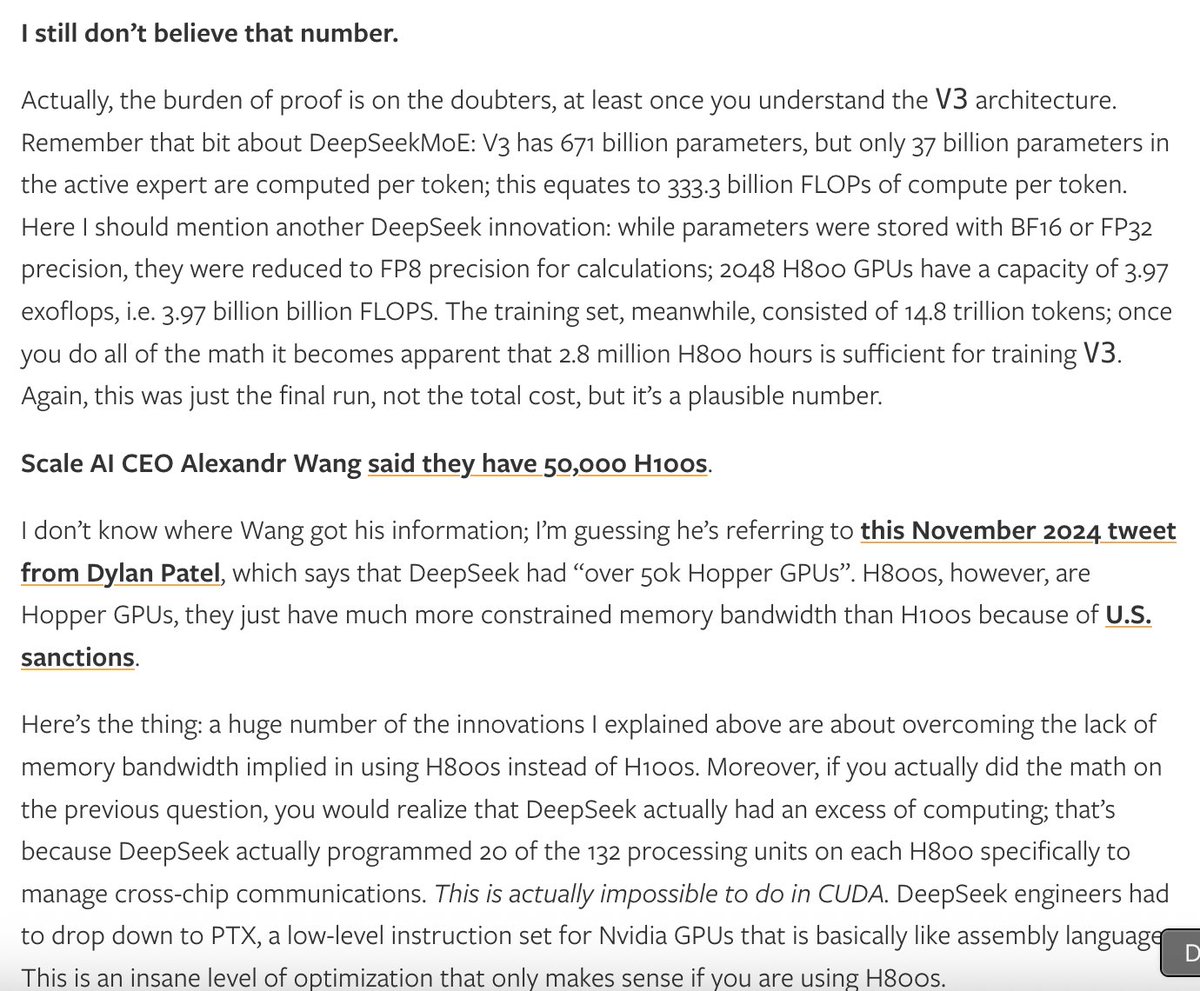Accelerate AI. Root out traitors. Break regulatory capture. Sign half-trillion dollar deals. Beat China at all costs.
I'm in @arenamagdotcom with a comprehensive timeline about how the US Government has changed it's tune on AI.
🧵
I'm in @arenamagdotcom with a comprehensive timeline about how the US Government has changed it's tune on AI.
🧵

A week after the election, I walked into the heart of the American Defense industry - CSIS. The headliner of the event — Chris Lehane, VP of Global Affairs at OpenAI — laid out a blueprint for "AI opportunity zones" and "an AI transmission superhighway".
This was part of a comprehensive plan for what American could do to accelerate AI - “The analog to guns, germs, and steel today is chips. It is data. It is energy,” said Lehane.
"I remember when it was chips, data, and algorithms," one later panelist remarked.
Two months later, on January 21st, the Chinese AI lab DeepSeek released R1. They shocked the world by showing just how efficient AI algorithms could be.
Two months later, on January 21st, the Chinese AI lab DeepSeek released R1. They shocked the world by showing just how efficient AI algorithms could be.

Tech stocks plummeted as the DeepSeek news sunk in. I got calls from dozens of journalists and think tankers asking me to explain what DeepSeek even was.
It seemed like China had finally got it's Sputnik moment.
It seemed like China had finally got it's Sputnik moment.

I was shocked by how much Washington was flying in the dark. The first time I heard about DeepSeek was back in 2023, from a twitter anon named @teortaxesTex
https://x.com/teortaxesTex/status/1730128618876023241
By 2024, academics were singing the praises of DeepSeek cheap and innovative models. American AI companies were on the lookout for them.
Yet in 2025, Washington was caught completely off-guard by the "new" top AI model in China.
Yet in 2025, Washington was caught completely off-guard by the "new" top AI model in China.
“People treated this as some kind of out-of-the-blue surprise, but it really wasn’t if you were actively following open-source AI.” said Stanford professor @chrmanning 

Endless cope followed, including ludicrous claims that Deepseek had to have used hundreds of times the training cost (well debunked by @benthompson)
stratechery.com/2025/deepseek-…
stratechery.com/2025/deepseek-…

A few months later, reality set in. @DavidSacks, @sriramk, and @realDonaldTrump realized that if America didn't change course, we would lose. 

“This administration will not be the one to snuff out the startups and the grad students producing some of the most groundbreaking applications of artificial intelligence,” @JDVance told the world at the Paris AI Action Summit 

“When a massive incumbent comes to us, asking us for safety regulations, we ought to ask whether that safety regulation is for the benefit of our people or whether it's for the benefit of the incumbent.”
They had a new theory of the case: for years, the Biden administration had limited the use of American AI worldwide - AI Diffusion. We needed to do the opposite. We needed to making sure the world buys American.
https://x.com/DavidSacks/status/1920805676122579195
@jjding99 wrote the book on AI diffusion. The "the U.S. is well positioned to outcompete China when it comes to the diffusion of AI across its entire economy. 

Deepseek has prompted a total re-evaluation of where technological progress comes from — giant monopolies, or a vast competitive network?
Now, diffusion theory is going mainstream.
Now, diffusion theory is going mainstream.
"Efficient technology transfer hinges on trusting relationships between research and development," @ylecun told me earlier this year.
“Open sourcing research prototypes can help convince internal product groups to adopt a tech from their own research lab.”
“Open sourcing research prototypes can help convince internal product groups to adopt a tech from their own research lab.”
In the tech ecosystem, another concern is bubbling up: to match China's research output, America also needs to funds its AI researchers - whose research has been critical in every American AI company.
The release of DeepSeek underscores the critical need for sustained investment in algorithmic research and computational efficiency,” @russellwald, Executive Director of Stanford HAI, told me.
The Sputnik moment taught us how much we didn't know. In response, we supercharged research, training, and collaborations between academics, engineers, and industry.
The most important thing I want Washington to take away from how DeepSeek caught them off-guard is this: however well-funded some AI companies are, there are still so many pieces of the American AI ecosystem that need funding - room to experiment - to take off.
We are so back. We are so early. Read the full piece here (with a wonderful redesign by @mualphaxi):
arenamag.com/articles/mr-de…
arenamag.com/articles/mr-de…
• • •
Missing some Tweet in this thread? You can try to
force a refresh














